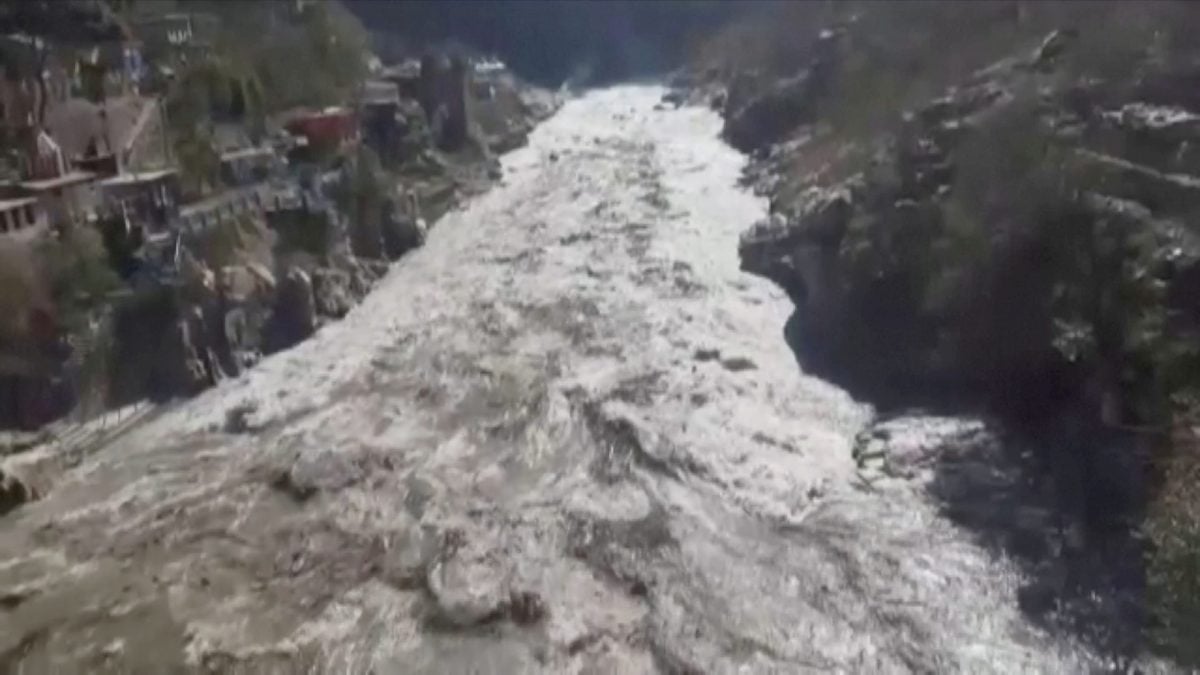NEW DELHI, (Reuters) – As many as 150 people were feared dead in northern India after a Himalayan glacier broke and swept away a hydroelectric dam today, with floods forcing the evacuation of villages downstream.
A witness reported a wall of dust, rock and water as an avalanche roared down the Dhauli Ganga river valley located more than 500 km (310 miles) in the state of Uttarakhand, north of New Delhi.
“It came very fast, there was no time to alert anyone,” Sanjay Singh Rana, who lives on the upper reaches of the river in Raini village told Reuters by phone. “I felt that even we would be swept away.”
Om Prakash, chief secretary of Uttarakhand, said 100 to 150 people were feared dead but the actual number had not yet been confirmed.
State police chief Ashok Kumar told reporters more than 50 people working at the dam, the Rishiganga Hydroelectric Project, were among those feared dead though some others had been rescued. Kumar also said authorities had evacuated other dams to contain the water rushing in from the flooded Alakananda river.
Uttarakhand is prone to flash floods and landslides and the latest disaster prompted calls by environment groups for a review of power projects in the ecologically sensitive mountains.
State utility NTPC said Sunday’s avalanche had damaged a part of its Tapovan Vishnugad hydropower plant that was under construction further down the river. It gave no details but said the situation is being monitored continuously.
India’s air force was being readied to help with rescue operations while disaster-response teams were airlifted in to help with relief and rescue. Army soldiers have already been deployed and helicopters were doing reconnaissance.
“India stands with Uttarakhand and the nation prays for everyone’s safety there,” Prime Minister Narendra Modi said on Twitter.
Footage shared by locals showed the water washing away parts of the Rishiganga dam as well as whatever else was in its path.
Videos on social media, which Reuters could not immediately verify, showed water surging through a small dam site, washing away construction equipment.
“Currently no additional water flows are being reported and there is no flood situation anywhere,” Uttarakhand Chief Minister Trivendra Singh Rawat said.
“No loss has been reported from villages along Alaknanda.”
The neighbouring state of Uttar Pradesh, India’s most populous, put its riverside areas on high alert.
‘HIMALAYAN TSUNAMI’
It was not immediately clear what had set off the avalanche at a time when it is not the flood season. In June 2013, record monsoon rains in Uttarakhand caused devastating floods that claimed close to 6,000 lives.
That disaster was dubbed the “Himalayan tsunami” because of the torrents of water unleashed in the mountainous area, which sent mud and rocks crashing down, burying homes, sweeping away buildings, roads and bridges.
Uma Bharti, India’s former water resources minister and a senior leader of Modi’s party, criticised the construction of a power project in the area.
“When I was a minister I had requested that Himalaya is a very sensitive place, so power projects should not be built on Ganga and its main tributaries,” she said on Twitter, referring to the main river that flows from the mountain.
Environmental experts called for a halt to big hydroelectric projects in the state.
“This disaster again calls for a serious scrutiny of the hydropower dams building spree in this eco-sensitive region,” said Ranjan Panda, a volunteer for the Combat Climate Change Network that works on water, environment and climate change issues.
“The government should no longer ignore warnings from experts and stop building hydropower projects and extensive highway networks in this fragile ecosystem.”









